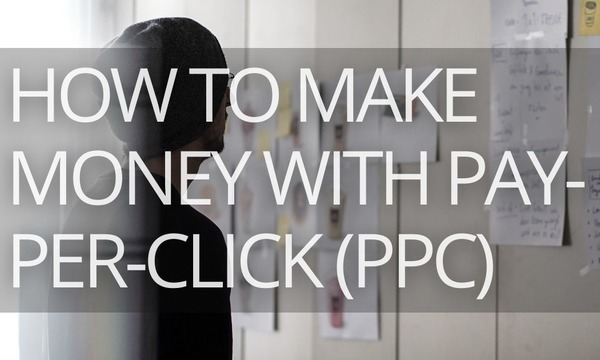A considerable part of marketing is about understanding who your target audience is. Before selling anything you need to know who your clients are. And it goes beyond their location, gender, and age.
In this article we are going to discuss wrong targeting. If you made mismatching mistakes in the past, this is an excellent opportunity to learn from them. Trying to sell to the wrong audience might lead you to finding the right audience if you are willing to listen to what your clients say.
A 2022 research from parcelLab shows that nearly half of the users would turn away from brands that targeted them wrongly.
If you still think that the worst that can happen if you target the wrong person is that your message will be disregarded or end up in the trash, you are wrong. The consequences are often much worse than that. 88% of people who were targeted with irrelevant promotions or advertisements in the past six months took action to distance themselves from the brand. Some immediately unsubscribed from the brand’s marketing content, and some even chose to block the brand on social media!
Customers are tired and do not want to receive promotional material that does not feel personal or relevant to their interests. And as you might know yourself, people see A LOT of advertisements today.
People are spoiled with good targeting. They want to be able to connect with the brand and feel recognized. Customers instantly know when they are a victim of terrible targeting. Luckily, there is a way to avoid it. And the first rule is to remember that personalization is a “must-do” for Digital Marketing.
Not everyone is a target
First of all, who is the target audience? Your target audience is a market segment you want to reach, those to whom you want to sell your product or service. The decision on who your target audience is can be based on demographics, geographics, interests, and wealth.
Paris Hilton once famously said: “Stop being desperate”. Now is the time to apply this strategy to your marketing. Stop trying to sell to those who will never buy from you. Otherwise, you will look desperate. Know your audience, and also know that not everyone is your target!
5 Signs that you are targeting the wrong audience
Doing the right targeting is easier said than done. In fact, some brands don’t even realize they are doing a lousy job with their marketing. And some brands see negative marketing statistics and don’t realise that targeting is the problem.
Here are five signs that show you are doing something wrong with the targeting. If they sound relatable, you need to change your targeting strategy.
1. If you think that anyone can be your customer
This mindset is the first red flag. It’s great to create something that many people can relate to, but applying such an approach to marketing is wrong. How are you going to create content that would be relatable both for a grandma and her grandchild? And if the message is too broad, it will never get enough attention from anyone.
2. If you’re getting visitors to your website, than don’t convert
If the number of views on your website goes up, but the number of purchases goes down, it is an obvious sign that your marketing campaign is great, but you are targeting the wrong audience. In other words, you are wasting money on those who came to windowshop or who came to your cafe solely for free wi-fi. But remember that the goal of any business is to sell; simply attracting is not enough.
3. If you’re getting a lot of negative comments and reviews
If you are spending money on social media marketing, but instead of getting satisfied customers, you find yourself constantly replying to negative comments on Instagram, you are doing something wrong.
Think about it. If people find the time to craft a negative review, they are most likely profoundly dissatisfied or offended. And if you believe you are selling a pretty good product, but still get those negative reviews, you haven’t found your audience yet.
For example, if you are selling expensive wooden toys and you’ve made a great marketing campaign. Someone who would not normally spend that much money on a toy buys it, and they are disappointed. They are not used to purchasing expensive toys for their children, so they expect magic from yours. That’s not going to work. If you sell expensive toys, you need to target those who are used to spending a lot of money on their kids.
4. If customers are unfollowing you on social media
If you have invested in targeted advertisements on social media and instead of getting new followers, you are noticing that you are losing the ones you already had, this is a bad sign. However, it is also a great sign because it is plainly telling you to change your strategy!
Similarly, if you are practising email marketing and the recipients are unsubscribing from your newsletter, they are not the ones who should be getting your emails.
5. If customers aren’t clicking on your call-to-action buttons
If people are opening your emails or clicking on your social media ads but not taking any further actions, then it’s likely that your messages are not reaching the right customers. If you notice such a pattern, try changing your targeting settings.
How to fix wrong targeting
Put your customers at the centre of your decision-making. Firstly, they will appreciate it, and you will be able to personalise their ads. And secondly, this approach will help you with the targeting.
1. Get to know your audience
Surely, you already have some loyal customers. Could you get to know them? Who are they? Why did they choose your brand? You can do it with the survey or by examining the statistics. The idea is to do the research that will help you sell to even more like-minded people. Look at your competitors. Who are they targeting? melhor site de apostas
2. Define your ideal clients
Now think of what you are selling. Know exactly who your ideal audience is. Don’t simply look at the age and sex of your customers; try to look inside their heads. Who should buy it from you? Think of why they are coming to you; what they are looking for. How are you solving the problems people come to you with?
For example, if you are a clothing brand, how do your clothes make people feel? Do they empower women, or do they help them to stand out?
3. Remember that the correct receiver is more important than the content of the message
Unfortunately, even if you have fantastic material with incredible visuals and attention-grabbing language, you should not assume that it will work for anyone. Here is an example from Etsy: a user has shared how they started receiving promotional emails from a brand that was clearly directed towards the sellers, while the user was a buyer. That puts the user off and might even drive them away from buying from Etsy in the future. Another example is when the user sees advertisements from their own shop.
4. Chose social platforms wisely
Being present on every social platform is not great. Because being present is not enough to drive traffic to your brand, you also need to be active. It’s similar to ‘planting’ trees. Just putting a seed in the soil does not guarantee a tree. You need to ‘grow’ it.
Same with social media platforms. Choose one or two, plant a seed and don’t forget to water it — quality over quantity. Which platform would your target audience most likely use? Be there for them. Respond to their comments and direct messages, and make your customers feel acknowledged and cared for.
5. DON’T target customer base that is too small or too vague
We’ve talked about targeting uninterested customers or those who cannot afford your product. However, if you know that a 30-year-old woman who likes silk pyjamas would be interested in your brand, give yourself some room to find that woman. In other words, don’t assume that every single woman in her 30s should be targeted.
A better way to target is to leave it to the machines
This section is the most important takeaway from this article. Leave targeting to the machines! They are much less likely to sell to the wrong audience.
Advertisement services, such as Google ads, have been long practising AI-generated targeting lists. And it works! Somehow, they know better. Machine learning delivers a far better return on ad spend (ROAS) than humans do manually.
Instead of looking for a ‘perfect’ potential customer, machines look at past brand data and determine who the brand’s audience is. AI looks at a brand’s entire campaign to understand why it performed the way it did – well or badly.
But here is the thing. Before you can rely on the machines, you need to build this dataset by trial and error. This is the reason why we did not start the article with this section.




